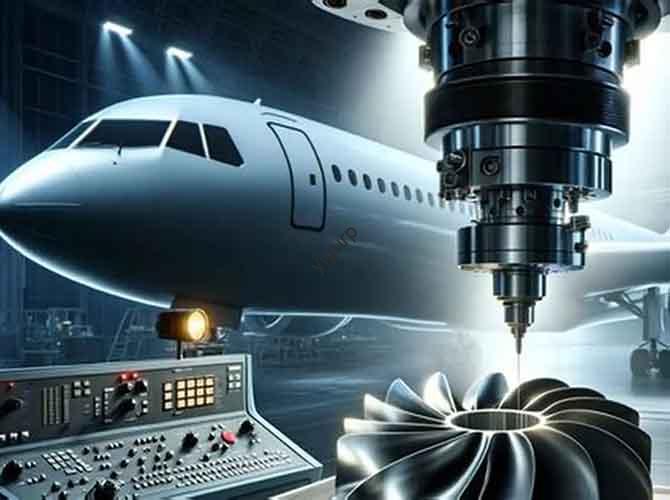Na fabricação, aluminum’s lightweight, resistente à corrosão, and malleable properties make it a top choice for countless products. But unlocking its full potential requires advanced processing—and CNC aluminum product processamento entrega. This technology solves critical pain points like inconsistent precision, produção lenta, and limited design flexibility that plague traditional methods. Let’s dive into its core advantages, Aplicações do mundo real, and why it’s a game-changer for businesses.
1. Precisão incomparável: Meeting the Strictest Tolerances
When it comes to aluminum parts, even tiny deviations can ruin performance—especially in aerospace or medical fields. CNC aluminum processing eliminates this risk with ultra-high accuracy and rigorous quality control.
Key Precision Metrics & Practices
| Aspecto | Detalhes |
| Precisão da usinagem | Achieves tolerances as tight as 0.01milímetros (Mais fino que um cabelo humano) |
| Etapas de controle de qualidade | 1. Raw material inspection (Por exemplo, alloy purity tests)2. In-process measurements with calipers or laser scanners3. Final checks via 3D/2D projectors |
| Redução de erros | Computer-programmed toolpaths replace manual operation, cutting human error by 90%+ |
Real-World Need: Por que a precisão é importante
Imagine an aerospace aluminum component for a jet engine. If it’s even 0.1mm off, it could cause vibrations or fuel inefficiencies. CNC aluminum processing ensures every part meets these strict standards—no exceptions.
2. Complex Shape Processing: Turning Designs Into Reality
Traditional machining struggles with intricate aluminum structures (Por exemplo, hollow frames, curved grooves). CNC aluminum product processing breaks these limits, thanks to multi-axis technology and advanced programming.
Usinagem com vários eixos: What It Is and Why It Helps
- 3-eixo cnc: Handles basic 2D/3D shapes (Por exemplo, flat aluminum plates).
- 4-eixo cnc: Adds rotation for parts like cylindrical aluminum housings.
- 5-eixo cnc: Moves in 5 instruções, enabling complex geometries (Por exemplo, aerospace engine parts with angled holes).
Estudo de caso: Shenzhen Weimate’s Capabilities
Shenzhen Weimate, a leading CNC manufacturer, usos 3, 4, and 5-axis machines to process aluminum parts. For a medical device client, they created a hollow aluminum surgical instrument handle—a design impossible with traditional methods. The 5-axis machine completed the part in one clamping, Cortando o tempo de produção por 40% and ensuring uniform precision.
3. Diverse Surface Treatments: Boosting Performance and Aesthetics
Aluminum parts often need surface treatments to enhance durability or match brand aesthetics. CNC aluminum processing pairs seamlessly with a range of treatments, offering both function and customization.
Common Surface Treatments for CNC Aluminum Parts
| Treatment Type | Principais benefícios | Aplicações ideais |
| Anodizando | Improves corrosion/wear resistance; adds colored/textured finishes | Invólucros de eletrônicos de consumo, Equipamento ao ar livre |
| Pulverização | Offers wide color options; protects against scratches | Automotive aluminum trim, peças de móveis |
| Eletroplatação | Increases surface gloss and hardness | High-end audio aluminum casings, joia |
Exemplo: Personalized Consumer Electronics
A smartphone brand wanted aluminum backplates with a matte black finish and brand logo. CNC aluminum processing first shaped the plates, then anodized them to the exact color—delivering 10,000 identical, scratch-resistant units.
4. Produção eficiente: Faster Turnaround, Custos mais baixos
Para empresas, time and money are critical. CNC aluminum product processing automates workflows and speeds up production, even for small batches or prototypes.
Production Efficiency Comparison: CNC vs.. Usinagem tradicional
| Estágio | CNC Aluminum Processing | Usinagem tradicional |
| Automation Level | 90%+ (auto tool change, speed adjustment) | 30–40% (heavy manual labor) |
| Prototype Delivery Time | 3–7 dias | 2–3 semanas |
| Batch Production Speed | 500+ simple aluminum parts/day | 150–200 parts/day |
Why This Solves Business Problems
Uma startup necessária 50 aluminum prototypes for a new drone frame. Traditional machining would take 3 weeks—too slow to meet their investor deadline. CNC aluminum processing delivered the prototypes in 5 dias, letting them launch on time.
5. Wide Industry Applications: From Skies to Hospitals
CNC aluminum product processing isn’t limited to one sector—it powers critical products across industries, Graças à sua versatilidade.
Industry-Specific Uses & Benefícios
| Indústria | Common CNC Aluminum Parts | Key Advantages for the Industry |
| Aeroespacial | Componentes do motor, peças estruturais de aeronaves | Leve + alta precisão (meets FAA standards) |
| Automotivo | Body frames, Suportes de motor, chassis parts | Durável + produção rápida (supports car assembly lines) |
| Eletrônica | Afotos de calor, device shells, circuit board holders | Customizable shapes + boa condutividade térmica |
| Médico | Alças de instrumentos cirúrgicos, medical bed frames | Esterilizável + preciso (atende aos requisitos da FDA) |
Perspectiva da tecnologia YIGU
Na tecnologia Yigu, nós vemos CNC aluminum product processing as the backbone of modern manufacturing. Our team has partnered with 200+ clients—from aerospace startups to medical device firms—to deliver CNC-machined aluminum parts. We’ve found that CNC cuts production costs by 25% on average while boosting part consistency to 99.8%. Olhando para frente, we’ll integrate AI into our CNC systems to further reduce lead times and expand design possibilities—helping more businesses unlock aluminum’s full potential.
Perguntas frequentes
- P: What types of aluminum alloys work best with CNC processing?
UM: Most alloys (Por exemplo, 6061, 7075, 5052) are CNC-friendly. 6061 is ideal for general parts (Por exemplo, electronics shells), enquanto 7075 suits high-strength needs (Por exemplo, Componentes aeroespaciais).
- P: How much does CNC aluminum processing cost compared to traditional methods?
UM: For small batches/prototypes, CNC is 10–15% cheaper (Sem custos de molde). Para lotes grandes (10,000+ peças), costs are similar—but CNC offers better precision and faster delivery.
- P: Can CNC aluminum parts be recycled after use?
UM: Sim! Alumínio é 100% reciclável, and CNC processing produces minimal waste (only 5–10% scrap, vs.. 30% for traditional machining). Recycled CNC aluminum retains its quality for new parts.
